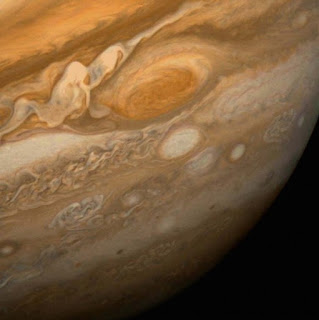| Online: | |
| Visits: | |
| Stories: |
Small star has storm like Jupiter’s!
Monday, December 14, 2015 4:24
% of readers think this story is Fact. Add your two cents.
While planets in our solar system are known to have long-lasting storms, stars – until now – aren’t. This star storm has lasted at least two years.

Astronomers announced on December 10, 2015 that they’ve discovered what appears to be an extremely small star – a bit like a brown dwarf, or star-planet hybrid, but massive enough to produce thermonuclear reactions in its core – with a long-lasting storm on its surface. Astronomers compare the storm to Jupiter’s Great Red Spot, a hurricane-like feature known for hundreds of years. In the case of the star W1906+40, though, they’ve watched the storm rage for just two years.
Still, even two years is a surprise. While some planets in our solar system are known to have long-lasting storms, stars – until now – aren’t. Most storms observed on stars before this lasted only hours, or at most days. A NASA statement called W1906+40’s storm:
… a giant, cloudy storm … akin to Jupiter’s Great Red Spot … a persistent, raging storm larger than Earth.
The storm is about as wide as three planet Earths and is thought to be near the star’s polar region.
The astronomers made the discovery using data from NASA’s Spitzer and Kepler space telescopes. Lead researcher John Gizis of the University of Delaware, Newark said:
The star is the size of Jupiter, and its storm is the size of Jupiter’s Great Red Spot.We know this newfound storm has lasted at least two years, and probably longer.
Brown dwarfs are typically considered failed stars because they don’t contain enough mass to ignite thermonuclear fusion reactions in their interiors. L-dwarfs are a sub-class of brown dwarfs. They are relatively cool, like brown dwarfs, but they do fuse atoms and generate light, much as our sun does.
W1906+40 has a temperature of about 3,500 degrees Fahrenheit (2,200 Kelvin). As NASA said:
That may sound scorching hot, but as far as stars go, it is relatively cool. Cool enough, in fact, for clouds to form in its atmosphere.
Gizis said the L-dwarf’s clouds are made of tiny minerals.
In the new study, the astronomers were able to study changes in the atmosphere of W1906+40 for two years. The NASA statement explained:
Read more at:





